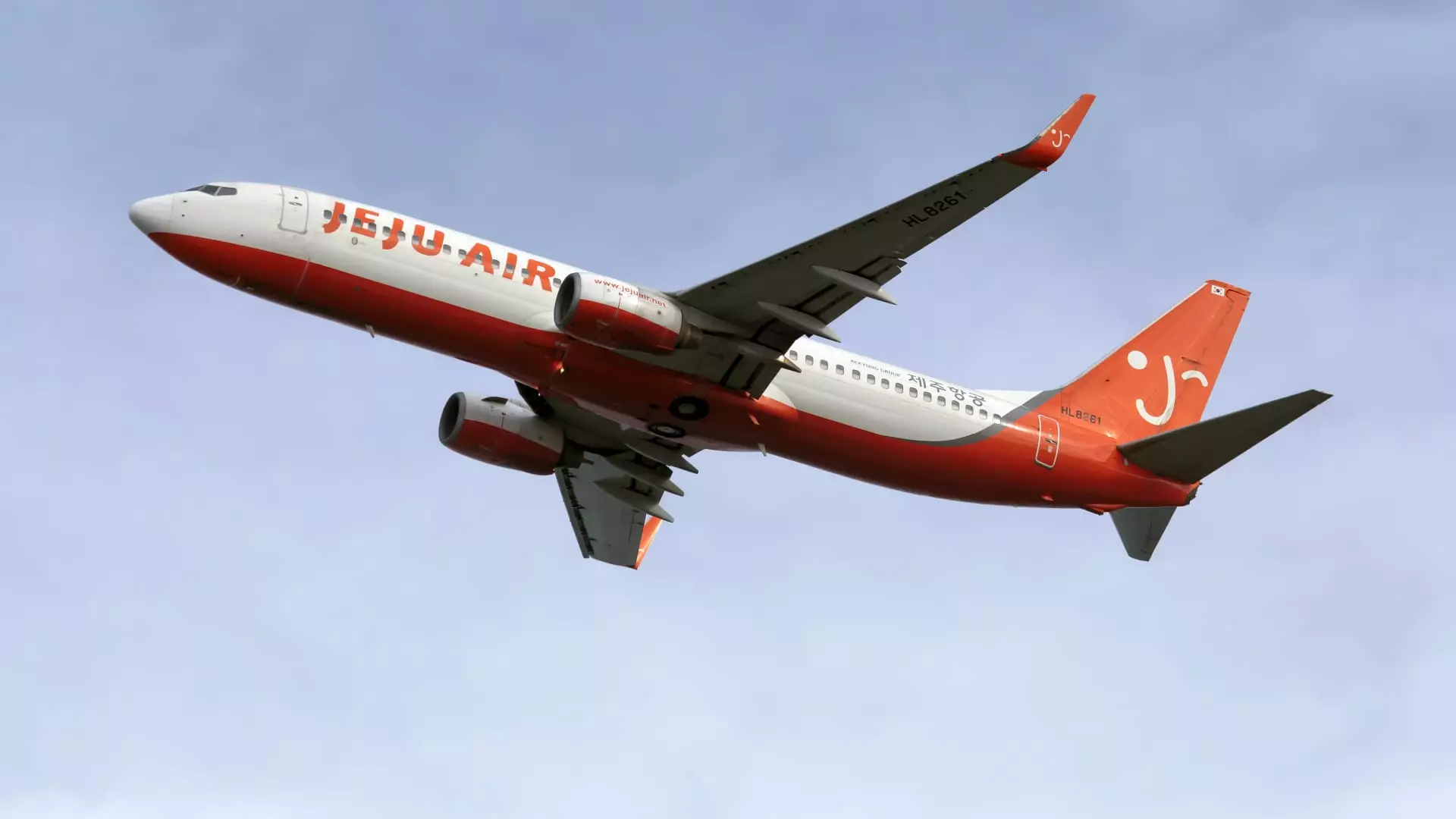On a seemingly ordinary day, an unforgiving incident unfolded at Muan International Airport in South Korea, marking a dark chapter in aviation history. Jeju Air Flight 7C2216, carrying 181 passengers and crew members, attempted a belly landing when its landing gear failed to deploy. As the aircraft struck the tarmac, it tragically ignited, leading to a catastrophic outcome that claimed the lives of 179 individuals. This disaster represents one of South Korea’s most severe air accidents in decades, prompting immediate national concern and a thorough investigation into the causes.
The gravity of the situation has attracted the attention of high-ranking officials, including the acting president, Choi Sang-mok, who promptly initiated a nationwide audit of the Boeing 737-800 fleet—an aircraft renowned for its reliability and extensive use within the aviation industry. Here lies an inherent contradiction: the incident involved an aircraft type synonymous with safety, forcing investigators to delve into the heart of the issue to unravel what went wrong.
A Closer Look at the Aircraft
The Boeing 737-800 has earned its place as one of the most utilized commercial jets globally, accounting for approximately 17% of the current fleet serving commercial passengers. It has been operational since its introduction, with the average aircraft aged at around 13 years. Acquired by Jeju Air in 2017, the ill-fated flight’s Boeing 737-800 had a prior life as a budget carrier’s aircraft, Ryanair. Questions arise about the safety of aging fleets, yet experts in the field suggest that the likelihood of identifying a design flaw is slim.
Richard Aboulafia, a noted aerospace consultant, expressed skepticism regarding the discovery of fundamental issues, indicating that “the idea that they’ll find a design flaw at this point is borderline inconceivable.” While the aging of an aircraft can raise eyebrows, such models have generally maintained commendable safety records. Thus, the investigation now shifts its focus from inherent design flaws to the specific circumstances surrounding the flight’s tragic approach.
The complexity of this tragedy deepens with the myriad of potential factors that could have contributed to the incident. While a thorough investigation by the National Transportation Safety Board (NTSB), in collaboration with Boeing and the Federal Aviation Administration (FAA), is underway, the unique circumstances present several challenges. One particularly curious aspect of the investigation involves the failure to deploy landing gear. Even in the event of a hydraulic malfunction, pilots are trained and equipped to manually lower the landing gear.
Among the theories being examined, one disturbing suggestion highlights the possibility of a bird strike, which could have incapacitated the aircraft’s engines. Jeff Guzzetti, with extensive experience in aviation safety, touched on the potential ramifications of such an event: “If that happens at the altitude they were at, they may not have had time to do emergency checklists.” Such circumstances emphasize the fine line between normal operations and disastrous outcomes, accentuating the unpredictability of aviation phenomena.
Furthermore, investigators are critically reflecting on the potential for a more favorable outcome had the aircraft not collided with an imposing barrier at the end of the runway. An exploration of how this incident unfolded—additional mechanical failures, crew responses, and situational factors—will play a crucial role in determining accountability and enhancing future safety protocols.
This tragedy assumes a broader significance beyond the immediate loss of life and the misfortunes of the victims’ families. It catalyzes critical dialogue surrounding aviation regulations and the safety measures currently in place regarding aging fleets. As investigators pursue the truth of Flight 7C2216, the industry waits with bated breath, hoping for insights that might prevent future disasters.
The catastrophic event at Muan International Airport reverberates through the aviation community, highlighting the need for stringent safety measures and an emphasis on thorough investigations. As the world learns from this incident, the hope remains that it not only leads to increased safety standards but also honors the memories of those tragically lost in the skies.


Leave a Reply